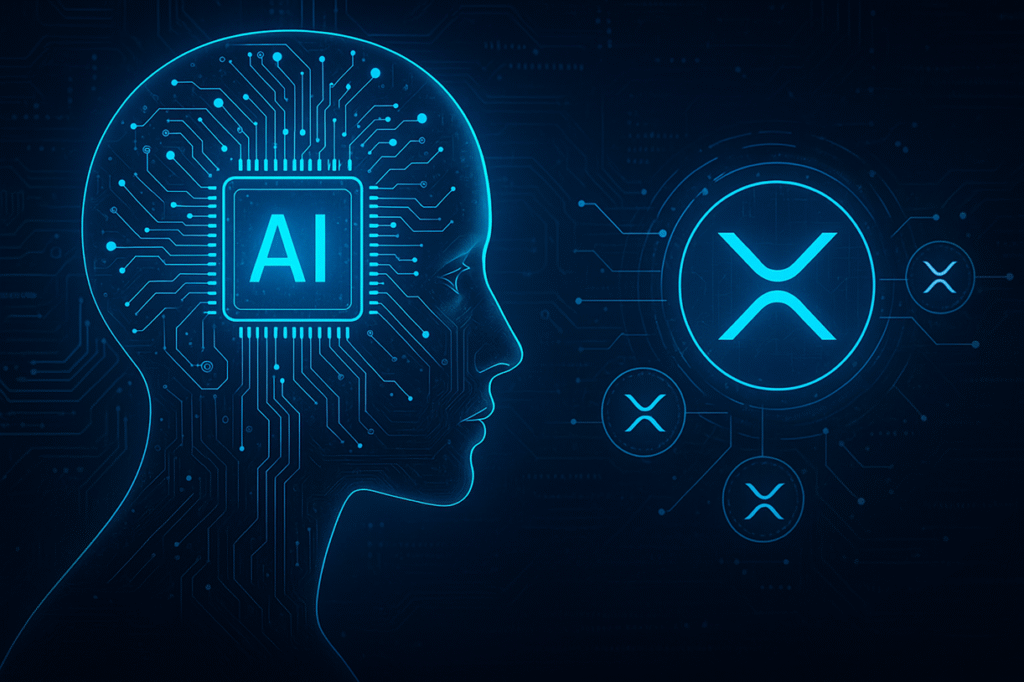In the digital age, the seamless integration of artificial intelligence (AI) and blockchain technology offers revolutionary potential for enhancing the functionality and security of distributed ledger systems. Ripple, in collaboration with Nanyang Technological University (NTU), is making strides in this realm by embedding AI capabilities directly into the XRP Ledger (XRPL). This initiative is set to transform XRPL into a robust platform for agentic AI applications, paving the way for more secure and efficient digital transactions.
The collaboration between Ripple and NTU highlights the potential for academic innovation to shape practical technology solutions in the real world. By embedding AI within the XRPL, the venture aims to create a dynamic environment where autonomous agents, such as trading bots and IoT services, can interact seamlessly on a shared infrastructure. This integration promises not only enhanced operational efficiencies but also increased transparency and security for digital transactions.
Ripple and NTU’s AI Integration with the XRP Ledger
Enhancing Security and Transparency through AI
The synergy between AI and blockchain technology holds immense promise for developing secure, efficient applications. During a recent episode of the “All About Blockchain” podcast, Professor Yang Liu from NTU discussed the transformative impact of AI on the XRP Ledger. AI integration is expected to enhance fraud detection, enable more sophisticated data analysis, and facilitate novel forms of on-chain intelligence.
Professor Liu’s insights emphasized how the XRPL could serve as a native platform for AI agents, enabling them to access payment and settlement systems directly. This groundbreaking approach not only enhances the capabilities of AI agents but also ensures that their actions remain verifiable and transparent due to blockchain’s inherent nature.
Implementation of AI on the XRP Ledger
The research spearheaded by Ripple’s University Blockchain Research Initiative (UBRI) has underscored the importance of integrating AI-driven agents on the XRPL. These agents imitate the workflows of expert auditors and are deployed as on-ledger services, offering a scalable and secure solution for various financial and operational tasks.
Professor Liu explained the project’s origins in his lab’s focus on cybersecurity, originally conceived to address the limitations of using large language models for smart-contract reviews. These models often failed to detect minute code syntax differences, which could make or break the security of blockchain applications. The adoption of agentic AI shifted the focus to developing systems capable of learning from both security experts and attackers, thereby enhancing the overall security posture of the XRPL.
Future Prospects and Security Considerations
Looking forward, the goal is to expand the adoption of AI agents within the XRPL ecosystem. Such agents will not only execute payments and manage transactions but will also contribute to an observable and verifiable on-chain process, enhancing overall system transparency. Furthermore, the team at NTU is exploring how memory-augmented agents might continuously improve by detecting new vulnerability classes over time.
The importance of maintaining rigorous security standards cannot be overstated, particularly when automating value transfers on a public ledger. Ensuring AI safety involves preventing unintended behaviors by goal-seeking agents, which could potentially alter states or move funds maliciously. Consequently, the integration of AI within the XRPL is being approached with careful consideration of both the technology’s potential and the necessary safeguards.
Practical Advice for Blockchain Developers
Ultimately, the successful implementation of AI on the XRPL will require continuous innovation and adherence to best practices in technology development. Professor Liu advises developers and researchers alike to assess the value of their projects critically, ensuring that they address genuine needs within the blockchain ecosystem. By leveraging the proven capabilities of AI and blockchain technology, developers can create groundbreaking applications that deliver real value.
The collaboration between Ripple and NTU is setting a new benchmark for the integration of AI and blockchain, promising far-reaching implications for the future of digital transactions.
How is AI improving the XRP Ledger’s capabilities?
AI enhances the XRP Ledger by offering smarter fraud detection, improved analysis, and novel forms of on-chain intelligence. This integration ensures that AI-driven transactions are more secure, transparent, and efficient, benefiting a wide range of blockchain applications.
What is agentic AI, and how does it benefit the XRPL?
Agentic AI refers to systems that mimic the workflows of expert auditors or attackers, allowing them to perform complex tasks on the XRPL. These AI agents improve the security and functionality of blockchain transactions by enabling on-ledger services that are both transparent and verifiable.
What safeguards are in place to ensure AI’s safe integration with the XRPL?
Safeguards include disciplined release cycles, robust API documentation, and rigorous testing to harden middleware against potential vulnerabilities. Additionally, the integration focuses on both AI security, preventing unauthorized access, and AI safety, ensuring that automated agents do not exhibit unintended behaviors.
How can developers contribute to the AI and blockchain integration on the XRPL?
Developers can contribute by focusing on high-impact research projects that align with the ecosystem’s needs. They should aim to build practical applications that leverage AI capabilities, ensuring that these innovations deliver tangible benefits and adhere to security and transparency standards.

